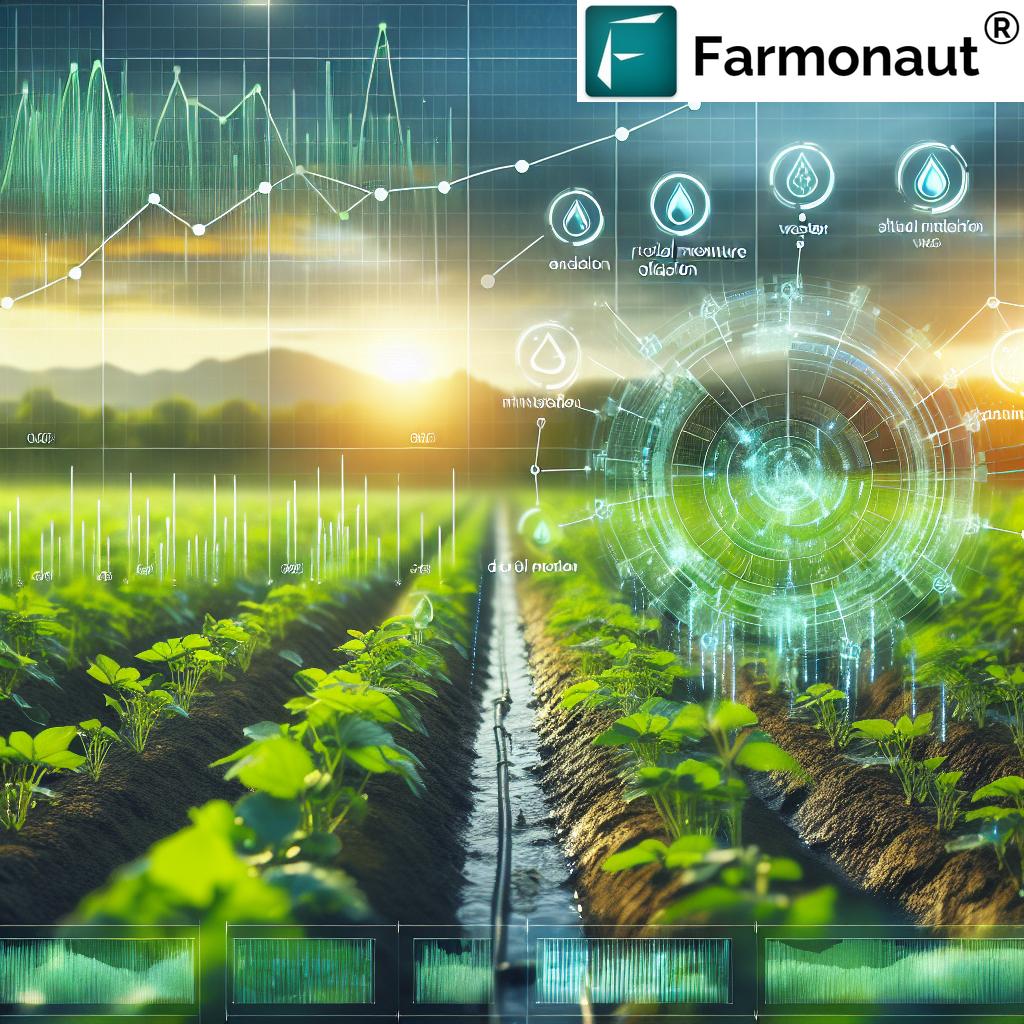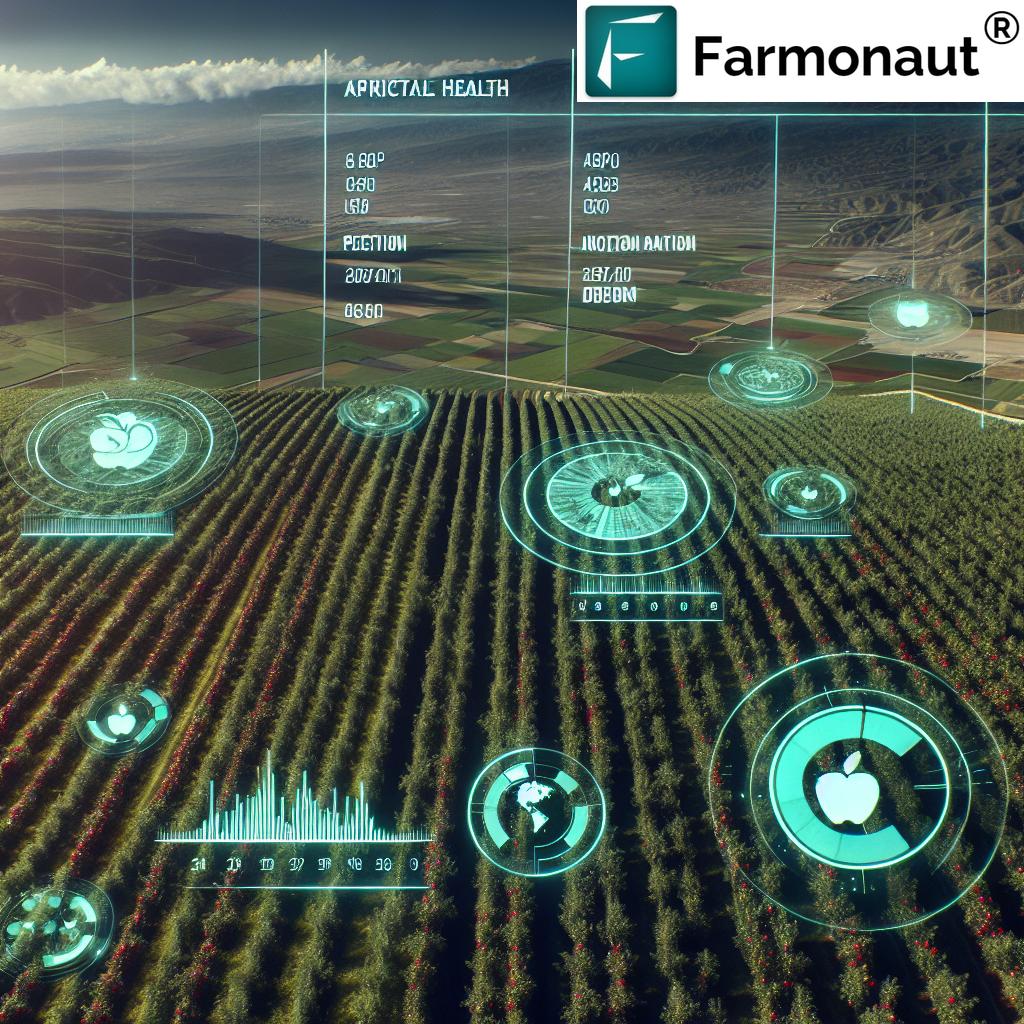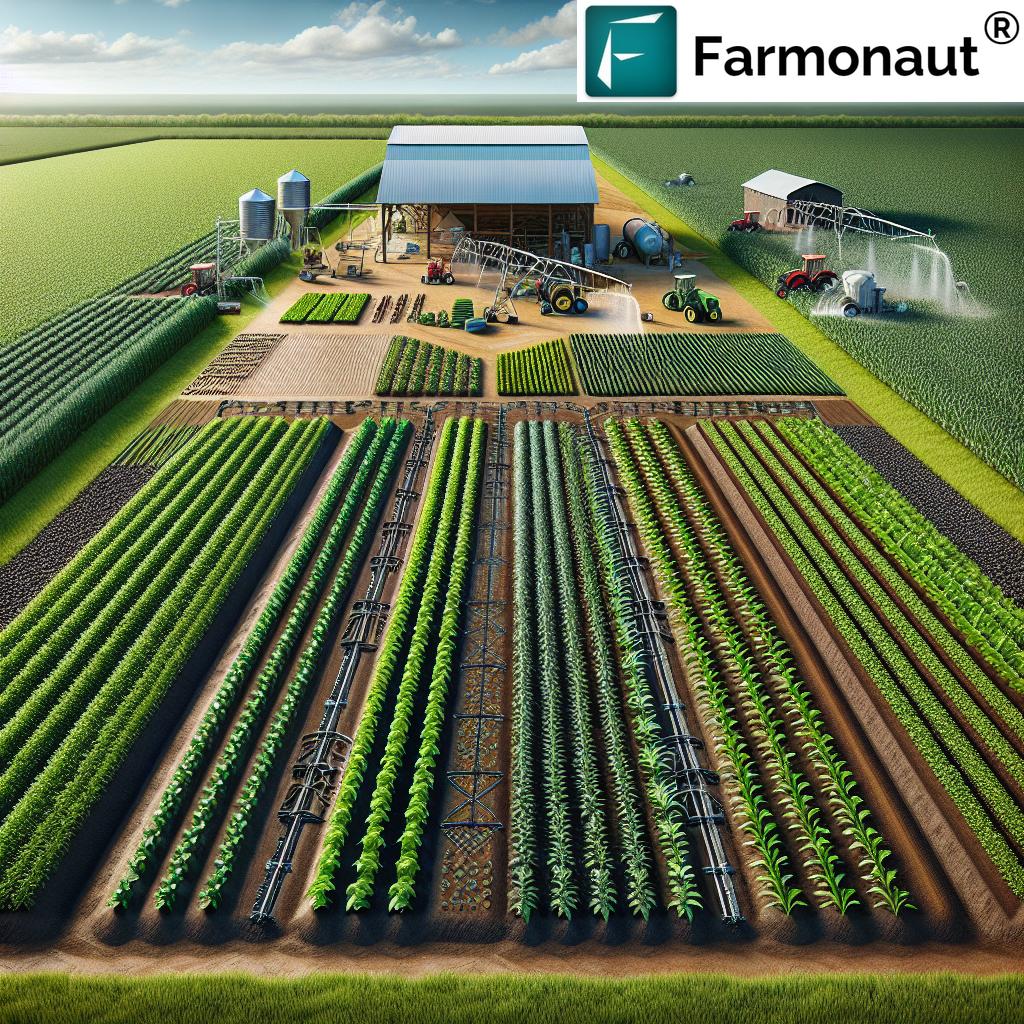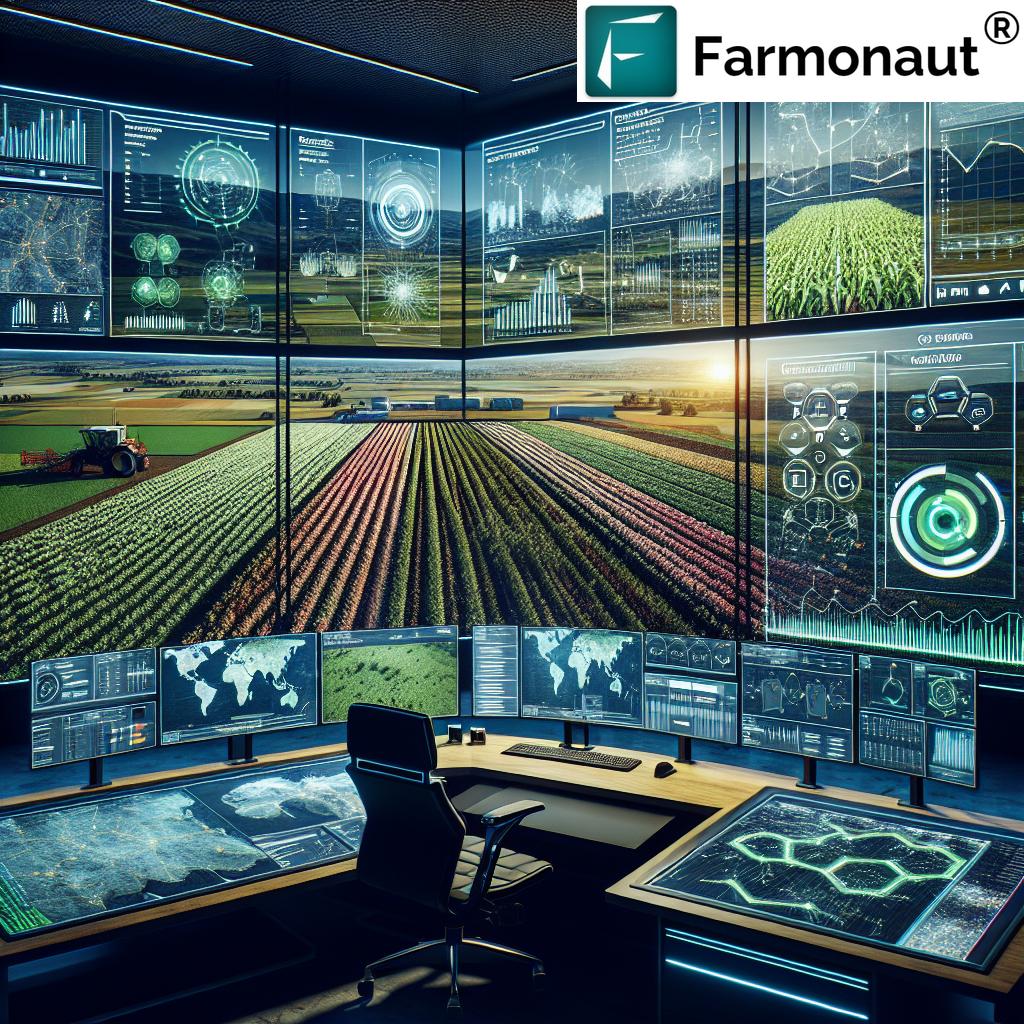Smart Water Infrastructure: Boost Yields With 7 Secret Hacks
“Smart water infrastructure can reduce agricultural water usage by up to 30%, significantly enhancing sustainability and crop yields.”
Summary: Smart Water Infrastructure in Agriculture & Forestry
In an era marked by water scarcity and unpredictable climate change, integrating smart water infrastructure across agriculture and forestry has become a cornerstone for modern, sustainable resource management. By leveraging advanced technologies—such as IoT devices in agriculture, precision irrigation technology, sensors, and machine learning—our farms and forests can optimize water usage, enhance crop yields, and ensure a healthier environment for the future.
Introduction: The Need for Smart Water Infrastructure
As we face rapid climate change and mounting water scarcity, the need for intelligent, efficient management of natural resources is more urgent than ever. Traditional irrigation systems often result in uneven, wasteful water distribution, excessive costs, and suboptimal crop yields. With growing demands on the world’s food supply, optimizing water usage has become crucial for sustainable agriculture and forestry.
By adopting smart water infrastructure, we not only monitor and control water distribution in real-time but also leverage advanced data analytics in agriculture to anticipate and respond to changing soil, weather, and plant conditions. This allows us to deliver the precise amounts of water required—when and where it’s needed most.
Understanding Smart Water Infrastructure
Smart water infrastructure refers to interconnected systems and technologies designed to monitor, collect, analyze, and optimize water distribution and usage across crops and plants in agriculture and forestry. These systems use sensors, IoT devices in agriculture, and advanced analytics to ensure every drop of water is used productively and sustainably.
- Data-driven decisions: Using real-time soil moisture sensors for farming, weather-based controllers, and remote monitoring, we gain unparalleled visibility into the needs of our fields and forests.
- Seamless integration with mobile platforms: Remote irrigation control via mobile or web-based applications empowers farmers to adapt irrigation schedules proactively from anywhere.
- Sustainability at its core: With the ability to predict and respond to weather forecasts and climatic conditions, we prevent needless wastage of water and other resources—propelling environmental sustainability in farming.
Why We Need Smart Water Infrastructure Now
Water scarcity affects 40% of the global population, and agriculture is responsible for nearly 70% of freshwater withdrawal. In regions like India, Africa, and the Middle East, water shortages can devastate crop yields and trigger food insecurity. Our future depends on building infrastructure that’s both technically advanced and sustainably rooted.
Key Components of Smart Water Infrastructure
Let’s explore the essential building blocks that bring smart irrigation systems and modern agriculture water management to life:
1. Sensors and IoT Devices in Agriculture
- Soil moisture sensors for farming: Accurately measure moisture at various soil depths, enabling precise irrigation scheduling.
- Other parameters tracked: Temperature, humidity, light intensity, and root-zone conditions.
- Benefits: Provide critical data to help prevent overwatering and under-watering, directly improving plant health and reducing wastage.
2. Weather-Based Controllers
- Integration with forecasts: Adjust watering schedules automatically based on real-time weather, rainfall probability, and climatic conditions.
- Prevention: Stop watering when rain is forecasted, avoiding unnecessary resource use.
3. Data Analytics and Machine Learning
- Pattern recognition: Advanced algorithms process collected data to identify soil and crop patterns, making accurate predictive analyses.
- AI-driven platforms: Dynamically analyze soil health and plant growth to anticipate and optimize resource allocation (Explore Farmonaut’s carbon footprinting and sustainability tracking).
4. Remote Monitoring and Control
- Mobile/web access: Farmers can monitor fields in real time and adjust irrigation remotely, leading to faster decision-making and reduced labor costs.
- Integration example: Farmonaut’s satellite-based management platform empowers remote irrigation control and crop health monitoring.
Access via browser, Android, iOS, or integrate via API for seamless farm management.
“Precision irrigation technology increases crop productivity by 20% while conserving vital water resources for the environment.”
Benefits of Smart Water Infrastructure for Agriculture and Forestry
- Water Conservation: Smart irrigation systems use sensors and real-time data to deliver only what’s needed, cutting water usage up to 50% and preserving this critical resource for the future.
- Improved Crop Yields and Quality: By aligning watering schedules with soil and plant needs, farmers see yield increases of 20-30% and enhanced product quality.
- Cost Savings: Lower water consumption and efficient resource management result in reduced operational costs and increased profitability in the long run.
- Environmental Sustainability in Farming: Tailored irrigation prevents runoff, soil erosion, and nutrient leaching, safeguarding entire ecosystems.
- Scalability and Inclusivity: Whether we manage a massive agribusiness or a smallholder farm, modern platforms (like Farmonaut Large-Scale Farm Management) make advanced tools accessible and adaptable.
7 Secret Hacks of Smart Water Infrastructure to Optimize Crop Yields
Let’s unlock the 7 best-kept secrets powering sustainable farming and maximize yields through precision irrigation technology and smart water infrastructure:
-
Intelligent Soil Moisture Sensing:
Use soil moisture sensors for farming to deliver irrigation strictly when necessary. By understanding real-time soil conditions, we prevent overwatering and reduce water wastage. -
Weather-Adaptive Irrigation Scheduling:
Integrate weather-based controllers that automatically adjust watering schedules in response to forecasted rainfall, humidity, and temperature. -
Machine Learning-Driven Water Distribution:
Employ AI and machine learning algorithms to analyze collected data and optimize water delivery schedules dynamically, based on plant growth patterns and past performance. -
Remote Monitoring and Control via Mobile Platforms:
Enable farmers to remotely monitor field conditions, tweak irrigation, and respond instantly to alerts or anomalies—significantly saving on labor and time. -
Dynamic Integration of Satellite Imagery:
Leverage advanced tools like Farmonaut’s satellite-based monitoring solutions to assess crop health, detect water stress, and guide resource allocation. -
Automated Leak Detection and Response:
Deploy sensors throughout irrigation infrastructure to identify leaks or failures, minimizing unscheduled wastage and maintaining system integrity. -
Integration with Blockchain for Traceable Water Management:
Adopt blockchain-based product traceability for water input, ensuring transparent records of resource use and supporting regulatory compliance and consumer trust.
Comparison Table of Smart Water Infrastructure Hacks and Their Sustainability Impact
| Hack Name | Estimated Water Savings (%) | Estimated Yield Increase (%) | Environmental Benefit | Ease of Implementation |
|---|---|---|---|---|
| Intelligent Soil Moisture Sensing | 25-35% | 15-20% | Reduces water wastage, improves root health, prevents overwatering | High |
| Weather-Adaptive Irrigation Scheduling | 20-30% | 10-18% | Minimizes resource waste, adapts to climate variability | High |
| Machine Learning Water Distribution | 25-40% | 20-30% | Optimizes water use, reduces environmental impact | Medium |
| Remote Monitoring and Control | 15-25% | 10-15% | Reduces labor, increases response efficiency | High |
| Dynamic Satellite Imaging Integration | 20-30% | 15-20% | Early stress detection, precise water targeting | Medium |
| Automated Leak Detection/Response | 5-10% | 2-5% | Prevents hidden wastage, system reliability | Medium |
| Blockchain Traceable Water Management | 5-8% | 3-6% | Supports compliance, transparency, trust | Low |
How Farmonaut Empowers Smart Water Infrastructure, Precision Irrigation & Sustainability
Farmonaut is at the forefront of democratizing precision irrigation technology through affordable, real-time solutions tailored for farms of all sizes. Here’s how our tools directly contribute to smart water infrastructure:
- Satellite-Based Crop Health Monitoring: With Farmonaut’s advanced satellite analytics, we measure NDVI, soil moisture, and humidity to inform water scheduling—all from our phones or desktops.
- AI-Powered Jeevn Advisory: This smart system provides instant, personalized recommendations on irrigation schedules, based on live weather, soil health, and plant growth data. It learns from farm-specific patterns to enhance outcomes and minimize waste.
- Blockchain-Based Traceability: Through traceable water management, all field inputs and practices are transparently recorded—empowering farms with supplier and consumer trust.
- Fleet & Resource Management: Our fleet management tools help reduce field visits and optimize transport routes for efficient resource use.
- Environmental Tracking for Sustainability: We help farms understand and lower their carbon footprint with real-time emission analytics (Learn more).
- Inclusivity for Financing: Satellite-verified data supports crop loan and insurance applications, making financing more accessible and secure.
Try Farmonaut’s suite of solutions today and join thousands harnessing remote irrigation control, all-in-one data analytics in agriculture, and unbeatable sustainability tracking.
Challenges and Considerations in Adopting Smart Water Infrastructure
-
High Initial Investment:
Implementing smart irrigation systems and placing sensors across vast fields can be costly. However, with platforms like Farmonaut, the costs are becoming increasingly accessible for more farmers worldwide. -
Technical Complexity:
Adopting new technologies may require upskilling and training. The best platforms—such as Farmonaut’s intuitive apps—are designed to minimize this learning curve. -
Data Security and Privacy Concerns:
With more data being collected, robust security measures are essential to protect privacy and maintain trust. It’s vital that all systems employ modern encryption and strict privacy policies. -
Digital Divide:
Smaller or remote communities might lack access to stable internet or reliable hardware. Flexible, mobile-first solutions, and affordable subscriptions can help close this gap.
The Future Outlook: Next-Gen Innovations in Smart Water Infrastructure
Looking ahead, the integration of artificial intelligence, machine learning, and even more precise IoT devices in agriculture will bring sharper predictive abilities and further savings. We also foresee:
- Wider adoption of blockchain traceability for all resource flows in agriculture water management
- Continuous improvement in remote monitoring and control interfaces, particularly for mobile devices
- API-driven integrations—like those offered by Farmonaut’s API—allowing research institutes, agribusinesses, and government to easily build custom solutions atop real-time satellite crop and weather data
- Enhanced focus on sustainability: From carbon tracking to eco-certification, smart water infrastructure will align farming not only with food production but with global environmental goals.
With every innovation, we get closer to a world where smart, sustainable water management is the global standard for agriculture and forestry.
FAQ: Smart Water Infrastructure in Agriculture
What is smart water infrastructure in agriculture?
It refers to the integration of sensors, IoT devices, cloud analytics, and remote monitoring systems that collect, analyze, and optimize water usage for crops in real-time, ensuring efficient resource allocation and environmental sustainability.
How can smart irrigation systems boost crop yields?
By monitoring soil moisture, weather, and plant health, these systems deliver the exact amounts of water required at optimal times. This prevents water stress and supports better growth, resulting in increased yields and improved quality.
Are smart water infrastructure solutions affordable for small farmers?
Yes! Platforms like Farmonaut are making precision irrigation technology and remote monitoring affordable and accessible, with flexible web/mobile subscriptions and API options for every farm size.
What are the main challenges in adopting this technology?
The primary hurdles are initial investment, need for technical skills, and ensuring ongoing data security. Comprehensive, user-friendly platforms minimize these challenges, and the long-term cost savings and yield improvements easily outweigh the up-front costs.
What additional benefits do advanced platforms like Farmonaut offer?
Beyond smart water management, Farmonaut provides tools for crop health analytics, blockchain-based traceability, carbon tracking for sustainability, integrated fleet management, and support for loan and insurance—all vital for holistic, future-ready farm resource management.
How does satellite-based monitoring enhance water efficiency?
Satellite imagery provides a bird’s-eye view of entire fields and forests, highlighting areas of stress, water needs, and growth anomalies. This enables targeted, efficient interventions—reducing waste and maximizing yields.
Where can I access advanced smart water infrastructure tools?
Farmonaut offers a comprehensive solution suite via web and mobile apps, and through API integrations for agribusiness and researchers.
Conclusion
The drive toward smart water infrastructure is reshaping the landscape of agriculture and forestry globally. By harnessing advanced technologies, leveraging data analytics in agriculture, and tapping into affordable, accessible platforms like Farmonaut, we can optimize crop yields, cut resource wastage, and deliver a more sustainable future for generations to come. The key is clear: integrate, monitor, and act—smarter, greener, and more profitably than ever before.
Join us in making sustainable, intelligent water management the new normal—both for our farms and the planet!















